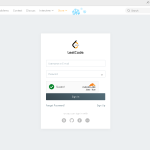
When used correctly, WooCommerce SEO Services are strong and efficient. Being the most widely used WordPress e-commerce plugin, it adds extra optimization capabilities while retaining many of the great SEO characteristics of its parent platform. Although it does take some configuration and extensions to fully realize its SEO potential, WooCommerce offers a foundation for ranking well in search results with the correct setup and strategy.
Despite WooCommerce’s many advantages, online store owners frequently encounter a wide range of difficulties that could impede their company’s expansion and success. Maintaining a flawless online shopping experience and making sure your e-commerce business is successful and lucrative depends on an ability to comprehend and overcome these typical challenges.
We explore the difficulties faced by WooCommerce store owners in this guide. We’ll provide workable answers to deal with them successfully. By taking on these obstacles head-on, you can increase sales, gain a competitive edge, and realize the store’s full potential. To build a more prosperous WooCommerce store, let’s set off on this adventure together.
How should your SEO evolve as you scale?
For long-term WooCommerce success, developing a thorough SEO strategy necessitates going beyond simple adjustments to produce long-lasting competitive advantages. Using user-generated content and consumer feedback to create useful, original content that is difficult for rivals to imitate is one effective strategy.
When combined with a product strategy, content marketing generates many search traffic entrance points. Think about creating:
- Detailed purchasing recommendations aimed at answering informational questions
- How-to videos that show off how to use products
- Comparative material that discusses options
- Content that solves problems and focuses on the issues that your goods solve
The continuous optimization efforts should be guided by analytics-driven decision-making. Use resources such as Google Search Console to routinely assess the search performance to determine:
- Keywords with high potential and increasing search volume
- Product pages with low click-through rates yet high impressions
- High bounce rate entry pages that require work
- Patterns of conversion that show the barriers and preferences of customers
Additionally, quarterly technical SEO audits should be carried out to spot new problems before they affect rankings. You should continue to pay close attention to Core Web Vitals, mobile device usability, and most importantly — crawl efficiency metrics.
To increase speed, it’s also advised to employ caching plugins, a CDN, optimized images, and fast hosting. Additionally, you should maintain plugin updates and minify CSS and JS. Reduced form fields, guest checkout, adjustable payment options, and mobile optimization will streamline the checkout process. Use payment gateways, SSL, 2FA, backups, and strong passwords to secure your store.
Instead of treating SEO as a one-time activity, the most prosperous WooCommerce stores view it as a strategic investment. By continuously enhancing user experience, technological performance, and content based on data-driven insights, you can create long-lasting search visibility that keeps growth going.
How to keep SEO quality during fast expansion?
Content clusters are a useful tactic for a content scaling process. Pillar pages should be used to support the main subjects, with supporting pages delving further into other facets of those topics. For instance, a website devoted to the subject of “email marketing” might have several pillar pages that concentrate on important subtopics such as “deliverability,” “automation,” and “subject lines.” Every pillar page serves as the primary focal point for its subject.
The complexity of your content project increases along with its size. You need a mechanism to quickly and simply track and monitor deadlines, assignments, and project status if you want to manage the content creation process successfully. Using a program like Trello, Notion, or Google Sheets, create a single content calendar that all parties involved may access.
Regardless of who is working on a piece, even if it’s an SEO specialist, a concise explanation of your voice and tone will cut down on onboarding time and help you maintain consistency while maintaining an SEO strategy. Standard templates are necessary for crucial phases of the content generation process, such as content briefs that contain information regarding structure, internal links, tone, and keywords.
RELATED ARTICLES
Latest Articles
 How Professional Services Firms Manage C…In Technology
How Professional Services Firms Manage C…In Technology LeetCode Login: Step-by-Step Guide to St…In Tipes
LeetCode Login: Step-by-Step Guide to St…In Tipes Why Smart Glasses Are the Next Big Thing…In Fashion, Technology
Why Smart Glasses Are the Next Big Thing…In Fashion, Technology Vicky Jain Net Worth 2026: How He Built …In Biography
Vicky Jain Net Worth 2026: How He Built …In Biography World’s Largest Eagle: Why Experts…In General
World’s Largest Eagle: Why Experts…In General Dame Jean Macnamara: Woman Who Transform…In Biography
Dame Jean Macnamara: Woman Who Transform…In Biography Scaling Quality Control With High-Precis…In Medical
Scaling Quality Control With High-Precis…In Medical The Role of Communication in Protecting …In Tips
The Role of Communication in Protecting …In Tips
stopie.com is a participant in the Amazon Services LLC Associates Program, an affiliate advertising program designed to provide a means for sites to earn advertising fees by advertising and linking to Amazon.com.
Clicking on an Amazon link from stopie.com does not increase the cost of any item you purchase.
We will only ever link to Amazon products that we think our visitors may be interested in and appreciate learning more about.




